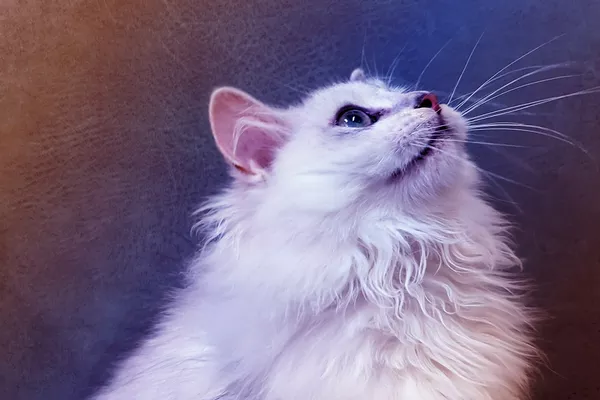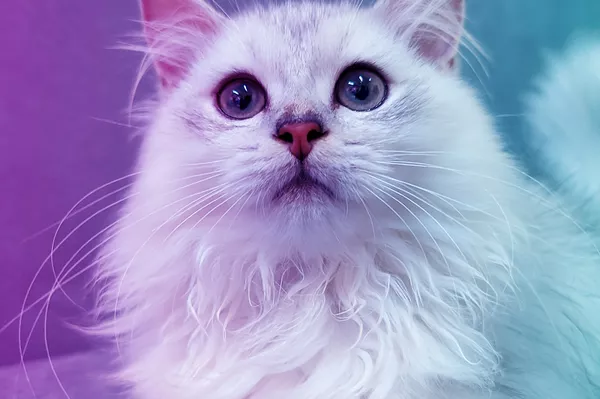Balinese cats, with their graceful appearance and silky coats, have captivated cat enthusiasts around the globe. These feline companions are often associated with a distinctive feature – cross-eyedness. In this article, we delve into the world of Balinese cats to unravel the truth behind the perception that all members of this elegant breed sport crossed eyes.
The Balinese Cat Breed: A Brief Overview
To understand the nuances of Balinese cats and their ocular peculiarities, it’s essential to delve into the breed’s origins and characteristics. Balinese cats are known for their striking resemblance to Siamese cats, characterized by their long, slender bodies, large ears, and striking blue almond-shaped eyes. However, unlike their Siamese relatives, Balinese cats boast a luxurious semi-longhair coat, adding an extra layer of allure to their elegant demeanor.
The Myth of Cross-Eyedness: Separating Fact from Fiction
One prevalent myth surrounding Balinese cats is the belief that all members of this breed are cross-eyed. While cross-eyedness can be observed in some Balinese cats, it is by no means a universal trait within the breed. It’s crucial to dispel this misconception and recognize that cross-eyedness is not a defining characteristic of Balinese cats.
Genetic Factors at Play: Understanding Cross-Eyedness in Balinese Cats
Cross-eyedness in Balinese cats, when present, is primarily influenced by genetic factors. This phenomenon is linked to the same genes that contribute to coat color and pattern in these feline companions. The genetic intricacies that result in some Balinese cats being cross-eyed are complex, and not all individuals within the breed carry these specific genetic markers.
Breeding Practices and Occurrence of Cross-Eyedness
Balinese cat breeders play a pivotal role in shaping the characteristics of the breed through selective breeding. While some breeders may intentionally emphasize certain traits, such as coat color or eye shape, not all Balinese cats from reputable breeders will exhibit cross-eyedness. Responsible breeding practices prioritize the overall health and well-being of the cats, aiming to mitigate the occurrence of genetic abnormalities.
Variability Among Individuals: Not All Balinese Cats Are Cross-Eyed
It is crucial to emphasize that Balinese cats, like any other breed, exhibit considerable variability among individuals. While some Balinese cats may indeed be cross-eyed, many others possess the characteristic almond-shaped eyes without any crossing. The diversity within the breed is a testament to the complex interplay of genetics and the influence of various factors on individual cats.
Health Considerations: Cross-Eyedness and the Well-Being of Balinese Cats
Cross-eyedness in Balinese cats, when not a result of intentional breeding for specific traits, is generally not a cause for concern regarding the overall health of the cat. It is essential for cat owners and breeders to prioritize the well-being of their feline companions, addressing any health issues that may arise, regardless of whether cross-eyedness is present.
See Also: What are the different types of Balinese cats
Common Misconceptions: Challenging Stereotypes about Balinese Cats
The prevalence of cross-eyed Balinese cats has led to common misconceptions about the breed. It is important to challenge these stereotypes and recognize the individuality of each cat. Balinese cats can be found in various eye shapes, colors, and patterns, and the presence or absence of cross-eyedness should not be the sole criterion for judging their beauty or health.
Balinese Cats in the Show Ring: Standards and Evaluation
In cat shows and competitions, Balinese cats are evaluated based on specific breed standards set by cat breeding associations. These standards encompass various aspects, including coat color, pattern, body structure, and eye shape. While some standards may allow for a slight divergence in eye alignment, persistent and pronounced cross-eyedness may be considered a deviation from the ideal.
Conclusion: Appreciating the Diversity of Balinese Cats
In conclusion, the notion that all Balinese cats are cross-eyed is a misconception that overlooks the diversity within this enchanting breed. Genetic factors, breeding practices, and individual variability contribute to the range of eye shapes observed in Balinese cats. Responsible breeding, coupled with a focus on the overall health and well-being of these feline companions, ensures that Balinese cats continue to be celebrated for their unique charm and elegance, regardless of the presence or absence of cross-eyedness.
Related Topics:
How long can Balinese cats be left alone
Do all Balinese cats have blue eyes
Are Balinese cats loyal
























